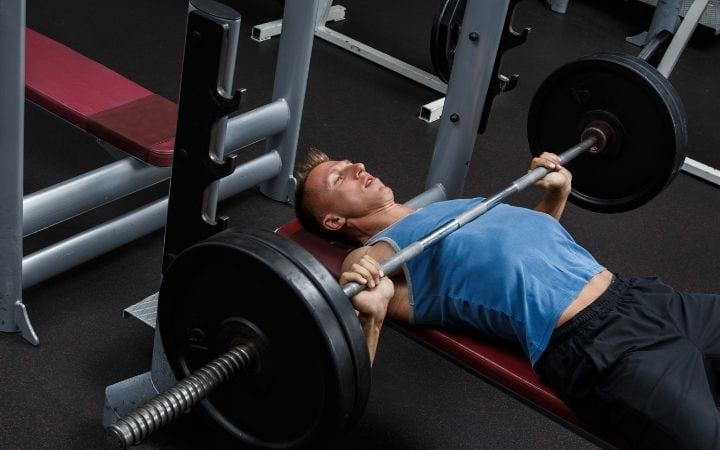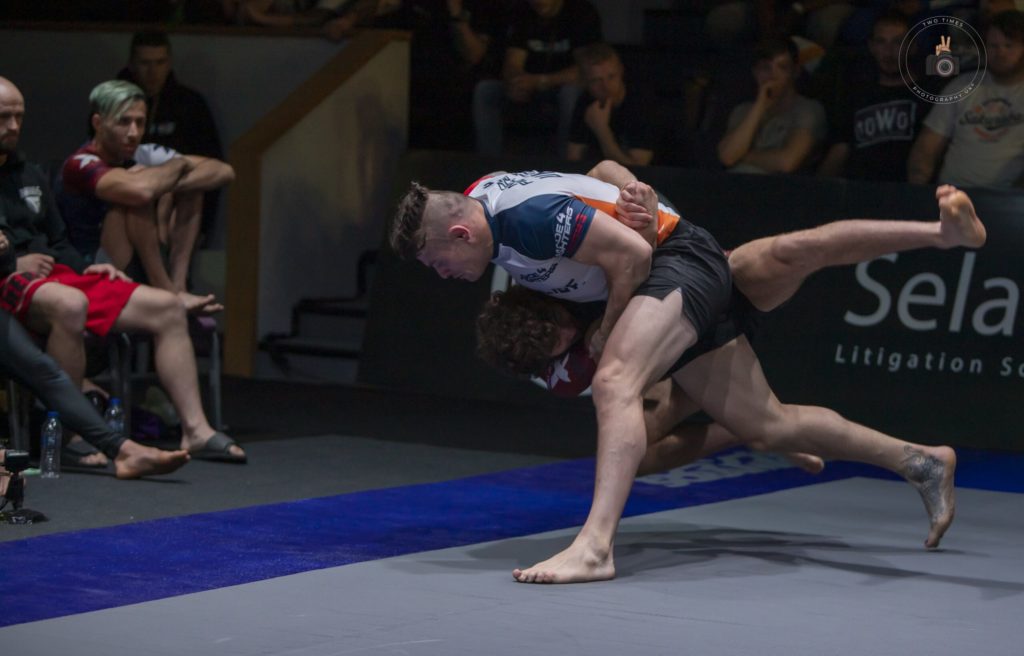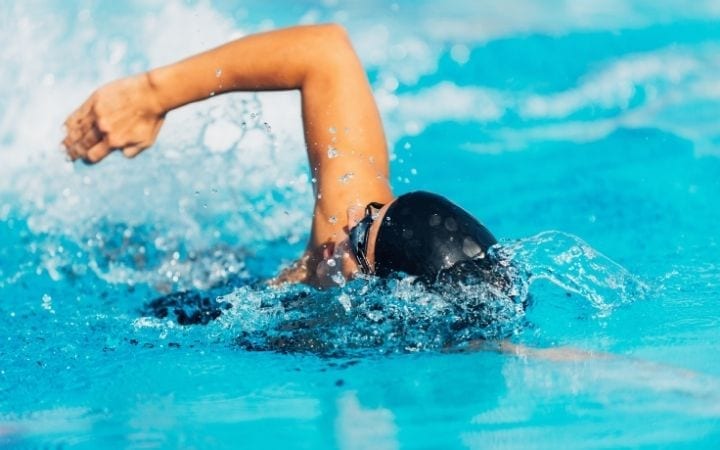What is the best BJJ strength and conditioning program? This is a question I hear over and over again. The problem with it is that there is no one program that we can say is the best for everyone. The main thing to understand about grappling-specific strength and conditioning is they depend on individual goals, abilities, and preferences.
The easy answer would be that the best BJJ strength and conditioning program is the one that works for you. A more complicated, but thorough, answer follows in the rest of this article.
Is Strength and Conditioning Training Necessary for BJJ?
Some claim that supplemental strength and conditioning training is a must, regardless of whether someone is a competitor or just training recreationally. Others claim that there’s absolutely no need to do anything but BJJ.
Both these schools of thought are based on the experiences of individuals and should be taken as anecdotal opinions rather than facts.
At the end of the day, training strength and conditioning will be helpful to your BJJ training, but only if you do it as supplemental training. Often people get drawn into lifting weights or CrossFit and it becomes their primary activity with grappling becoming the supplemental exercise.
If you want to focus on Jiu Jitsu, you need to look at a strength and conditioning program as your homework. You do your main work on the mats, but then dedicate a portion of your time throughout the week to make sure your body can do more when you’re on the mats.
Thinking about strength and conditioning from this standpoint will help you to figure out what the best strength and conditioning program will be for you.
Basics of BJJ Strength & Conditioning
If you want to be a better grappler, your focus should be on becoming stronger, better conditioned, more flexible, and most importantly, able to recover fully in between workouts.
Strength
Being stronger is not necessarily a guarantee you’ll do better in Jiu Jitsu. Grappling is so diverse that an attribute like strength can be extremely helpful in certain situations, but a detriment in others. Developing strength is not an easy process, and has to follow a very specific progression.

First of all, there are many aspects to strength ranging from absolute strength to explosive strength. All aspects of strength need to be trained separately before you try and connect them through a program that will specifically help you to become better at Jiu Jitsu.
The way to approach strength training for BJJ is to make your body stronger in order to be able to prevent injuries first, and looking into increasing absolute strength and power second.
Conditioning
Also referred to as your cardio or gas tank, conditioning more or less describes your ability to train at a fast pace for an extended period of time without getting exhausted. It is a highly trainable quality, but far from a simple one.
Just to put things into perspective, your body operates by utilizing different energy systems during different times. There are three main energy systems: the aerobic system, the anaerobic lactic system, and the anaerobic alactic system.
All three provide energy for different types of activity and can sustain the body during exercise for different amounts of time. Marathon running or sprinting only require one main system to be developed, while BJJ requires all three to work in unison. You can see why describing conditioning simply as “cardio” really doesn’t do it any justice.
Flexibility
I think that it is obvious that flexibility is a skill you must develop for Brazilian Jiu Jitsu. No BJJ strength and conditioning program is complete if it does not include flexibility training.

That said, we’re not going to extremes again – there is no need for everyone to become as flexible as Eddie Bravo in order to be good at BJJ. However, a certain degree of flexibility helps protect your joints and muscles and will extend the length of your BJJ career.
Recovery
The final piece of the puzzle of a BJJ strength and conditioning program is factoring in recovery. There are passive and active ways to recover from training and recovery should have a central role in any supplemental training program for athletes, and especially grapplers.
What A Good BJJ Strength and Conditioning Program Should Look Like
The Sport Science of Brazilian Jiu Jitsu
Jiu Jitsu matches start standing and competitors are expected to trade explosive takedowns. Once the match reaches the ground, your body will have to relax and contract, sometimes explosively, sometimes isometrically, all the while being in very unnatural positions in order for you to execute techniques.

Your body will need to shift quickly between bouts of slow and steady work that require strength and explosive bursts of energy during scrambles. In five minutes, your body will utilize all types of strength, all types of energy systems, and rely more than once on flexibility in order to get you through the ordeal of a BJJ match.
After you’re done, you will need to recover as much, and as quickly, as possible before you have to do it all again.
Goals
Obviously, training all aspects of strength and conditioning at the same time is impossible. So, when you’re looking for a BJJ strength and conditioning program, you will have to begin with setting goals.
These goals might be getting ready for a tournament, getting in better shape for rolling in your academy, becoming stronger, or developing your flexibility. Whatever your goals are, they will determine the type of program and how you set it up.
When it comes to picking, remember that training strength takes a lot longer than conditioning. So, if time is not a factor, and you need to improve both, focus more on developing strength first since you can catch up with conditioning in just a few weeks.
Periodization and Programming
The reason why it is called a BJJ strength and conditioning program is that there’s a certain structure to it that allows for positive adaptations to take place. The main factors to consider are how often you train, how hard you train, and how intensely you train.
When you’re first adding a supplemental training program to your routine you’ll want to start with 2x a week. You might be able to pull off three training sessions per week, but you may need to either sacrifice intensity and volume of strength and conditioning training or give up a BJJ class.
Volume and intensity have to do with your goals and your chosen methods for training. The goal is to train in a progressive manner, challenging your body at predetermined intervals, but also letting it adapt in between. This is the trickiest part of any strength and conditioning program, and where I’d recommend talking to professionals in the field.
When it comes to periodization and organization of training there are countless methods and systems out there, all claiming to be the best for you. Always take them with a solid grain of salt and use your goals as your main guide.
Exercise Selection
Most programs come with specific sets of exercises in addition to coming with a prescribed number of sets and reps. By now, everyone knows that the big lifts like the bench press, deadlift, and squat need to figure in every BJJ strength and conditioning program that’s worth looking at. However, these are all absolute strength moves, and as such are pretty exhausting.

To train for an extended period of time and keep seeing improvements, use one of the main lifts, but focus more on corrective exercises that involve gymnastics, bodyweight moves, dance coordination moves, or kettlebells. This is how you’ll prime your body for all the crazy positions that BJJ will force it into,
The situation is similar for conditioning – you don’t just have to do long boring runs, hill sprints, or endless jump rope. Feel free to switch around and give more interesting training methods like swimming or Fartlek a try.
Closing Thoughts
If you’re not an expert in the field, it may feel difficult to design a BJJ strength and conditioning program on your own. However, that doesn’t mean you should blindly trust all the programs you can find online or that you get from personal trainers.
Make sure you know what your goals are, what your body can take, and what you enjoy when you’re picking out a long-term strength and conditioning program to help you become a better grappler. Ultimately, the best strength and conditioning program is the one you’ll stick with.

Ogi is a black belt that does Jiu Jitsu full time and is very passionate about anything grappling-related.
He is also the head coach of Enso Jiu Jitsu in Macedonia and an aspiring Globetrotter.
